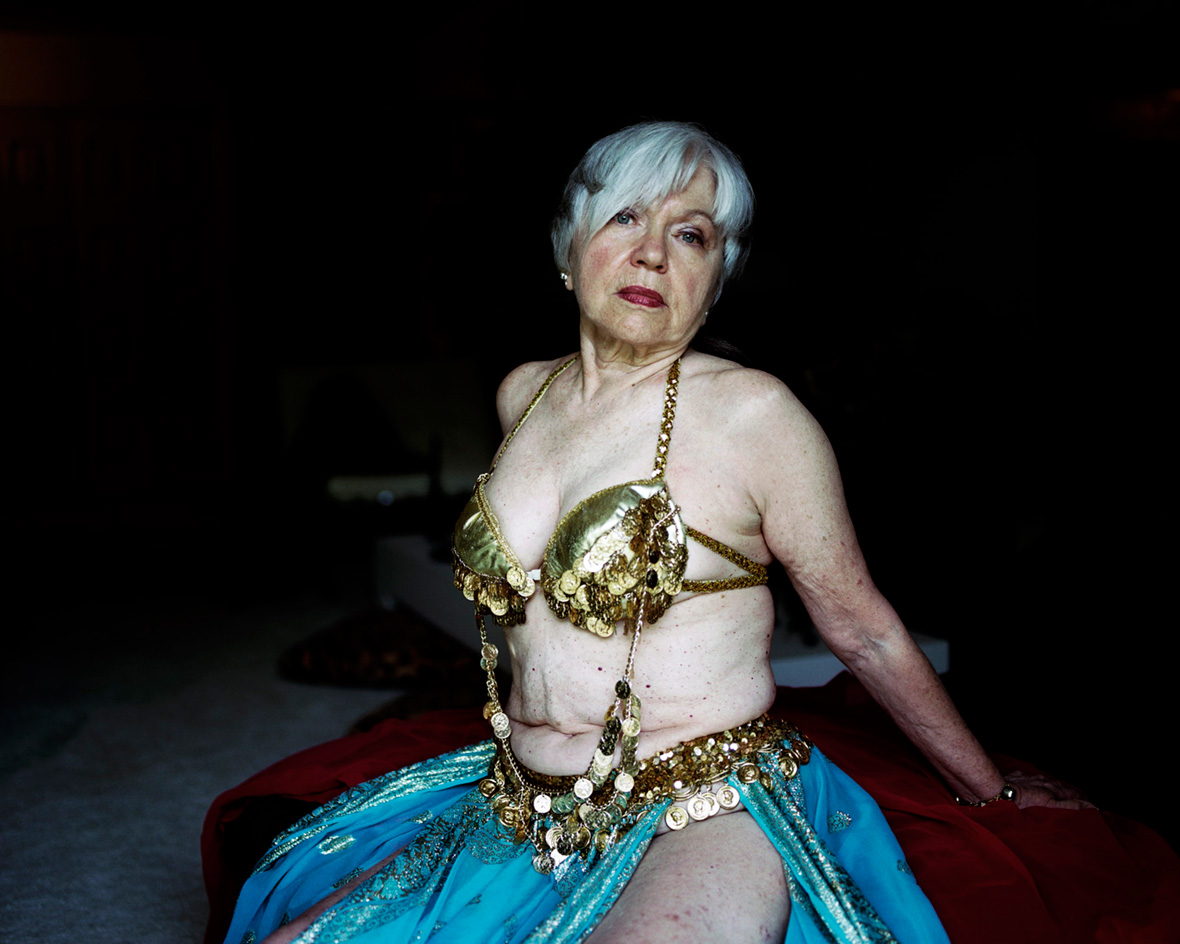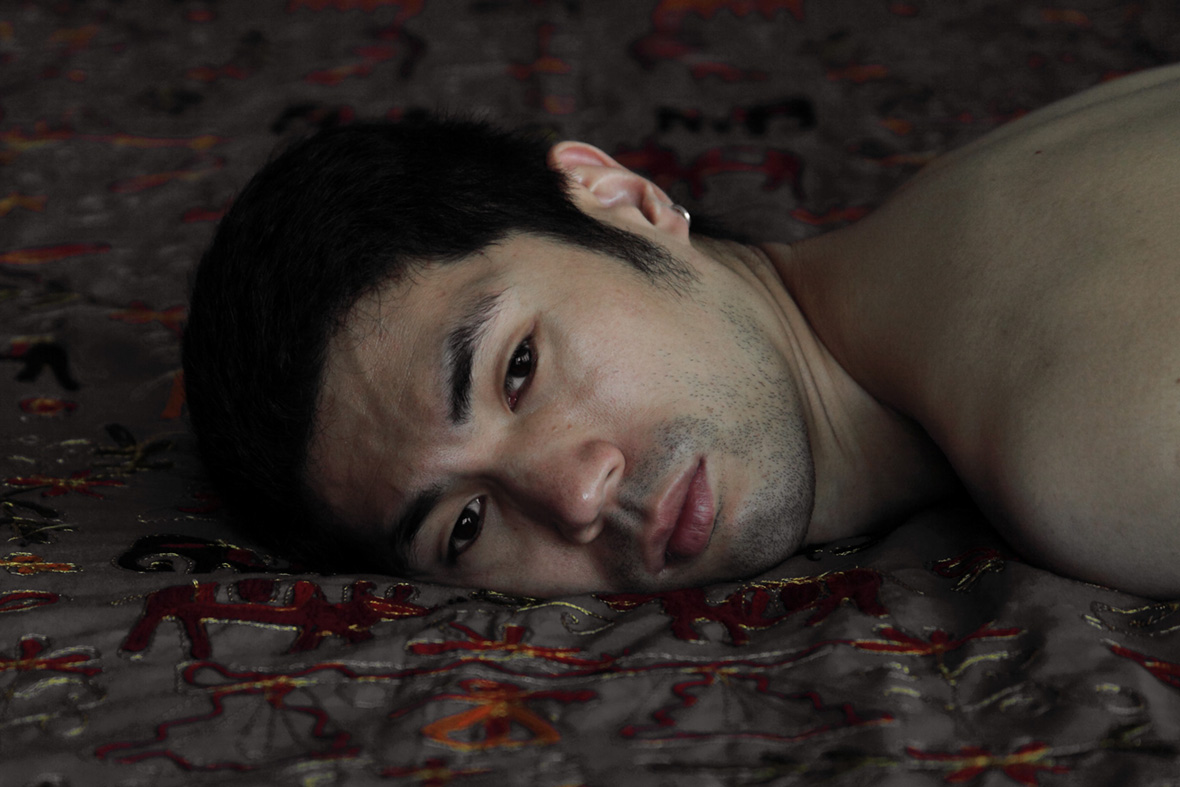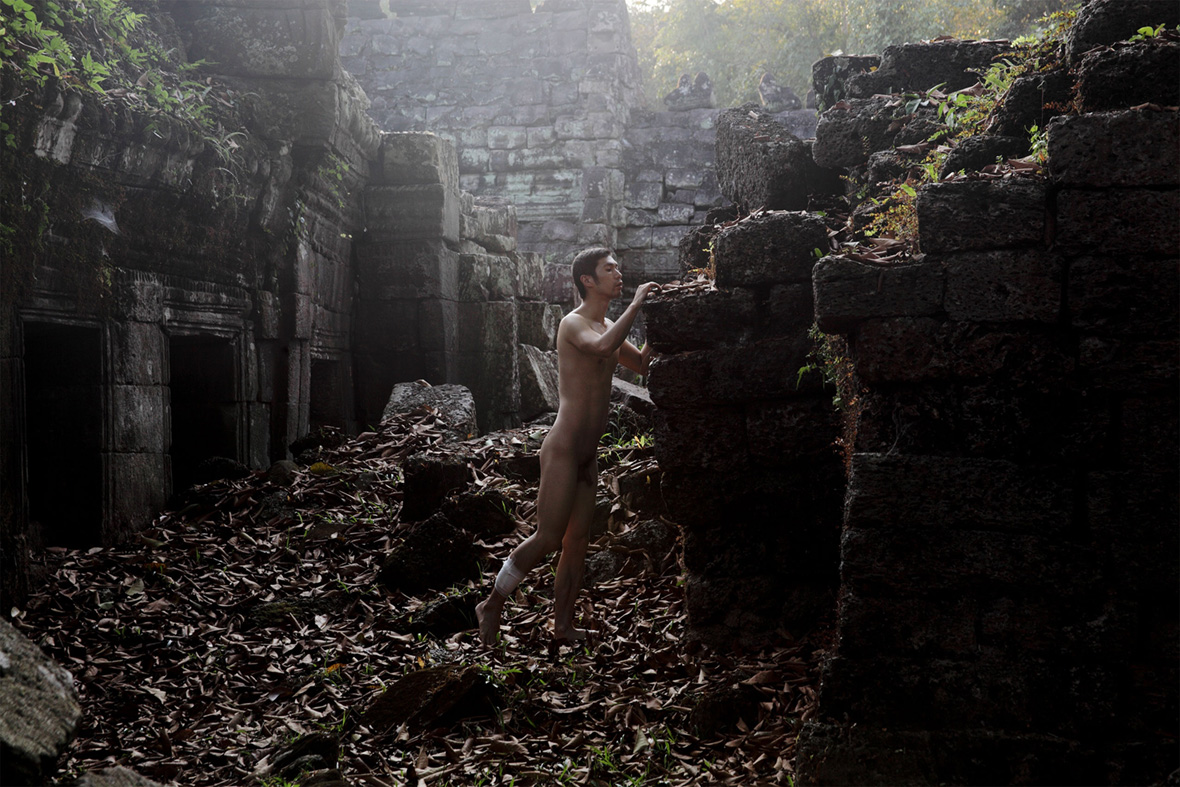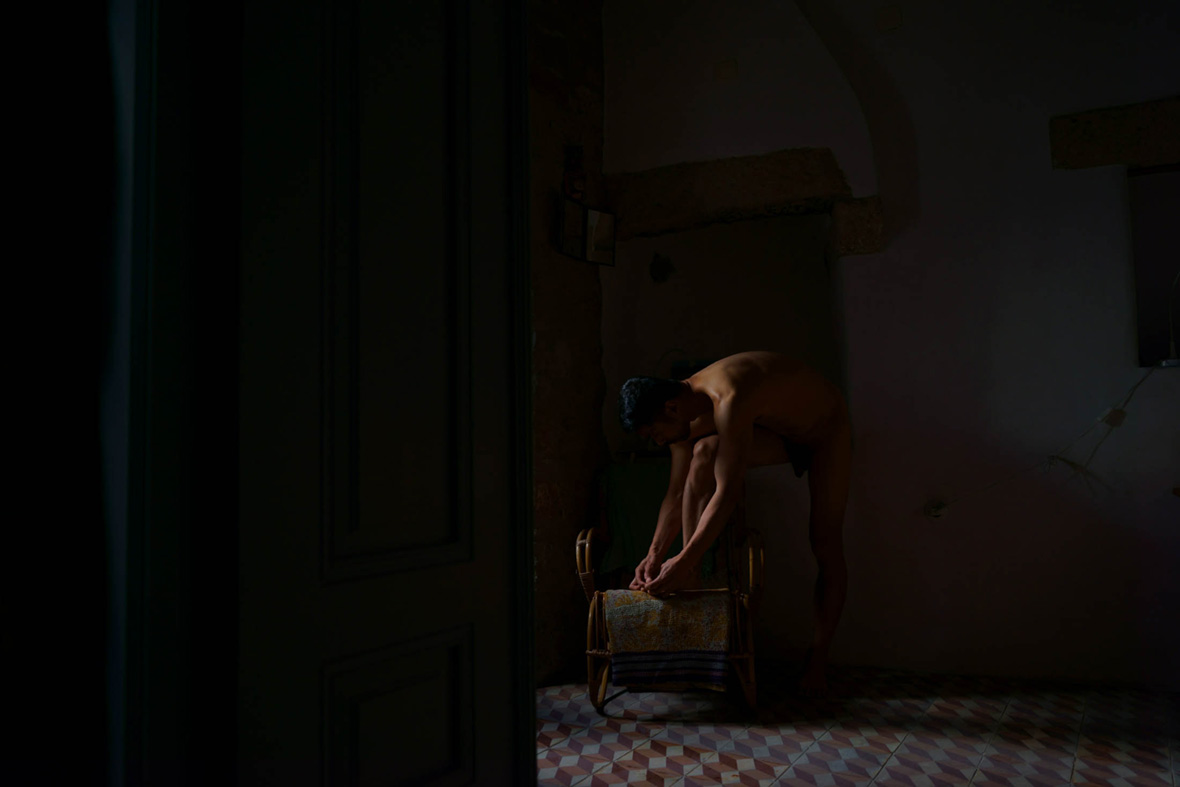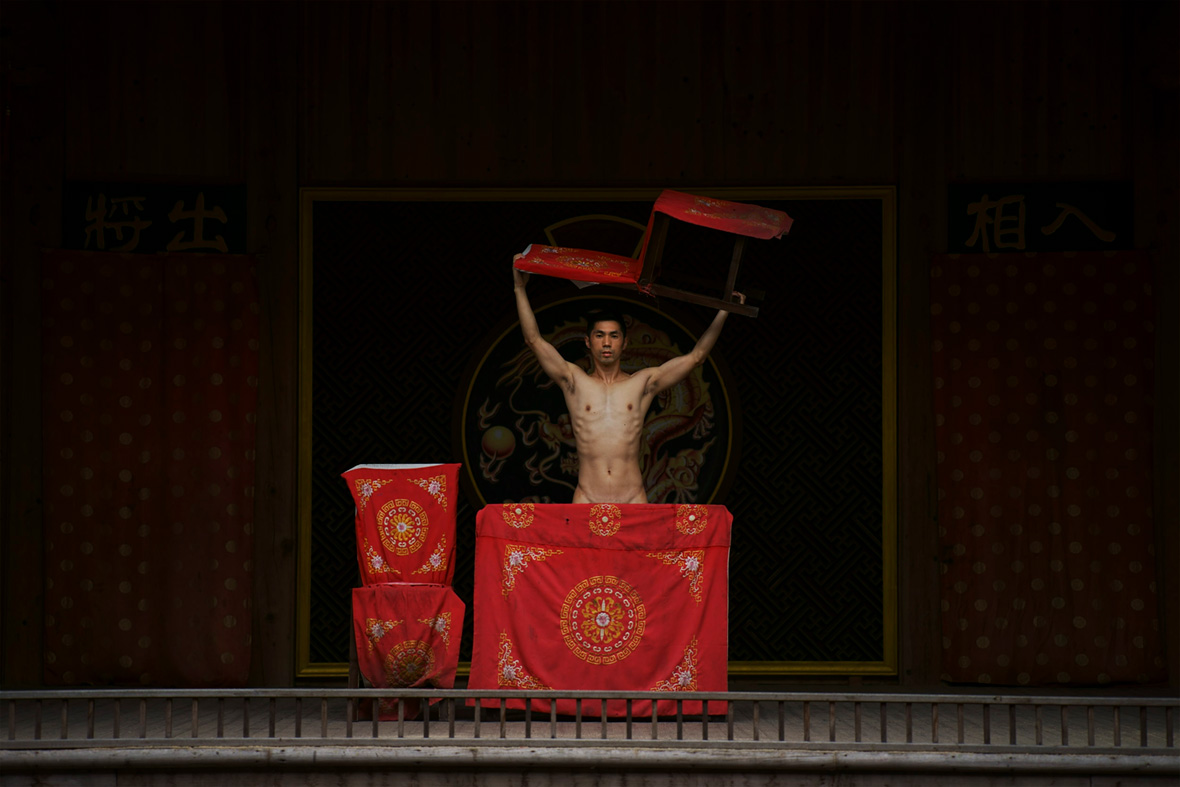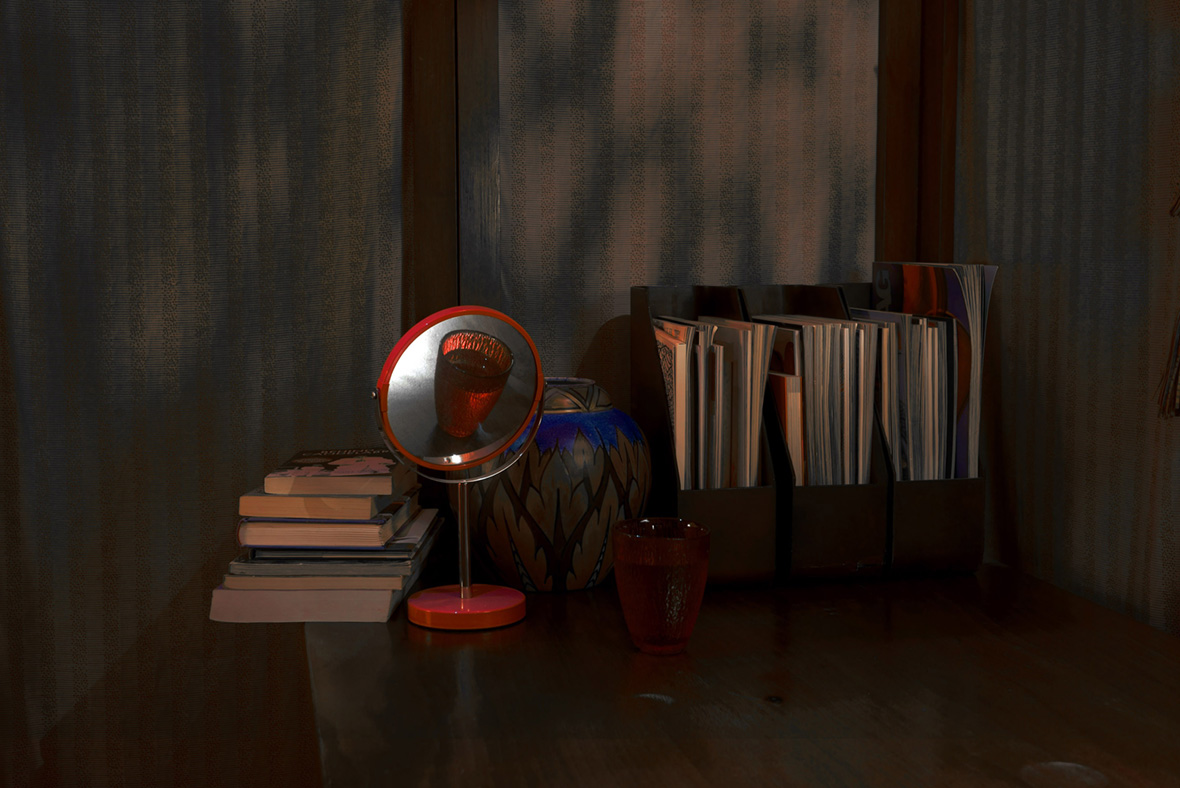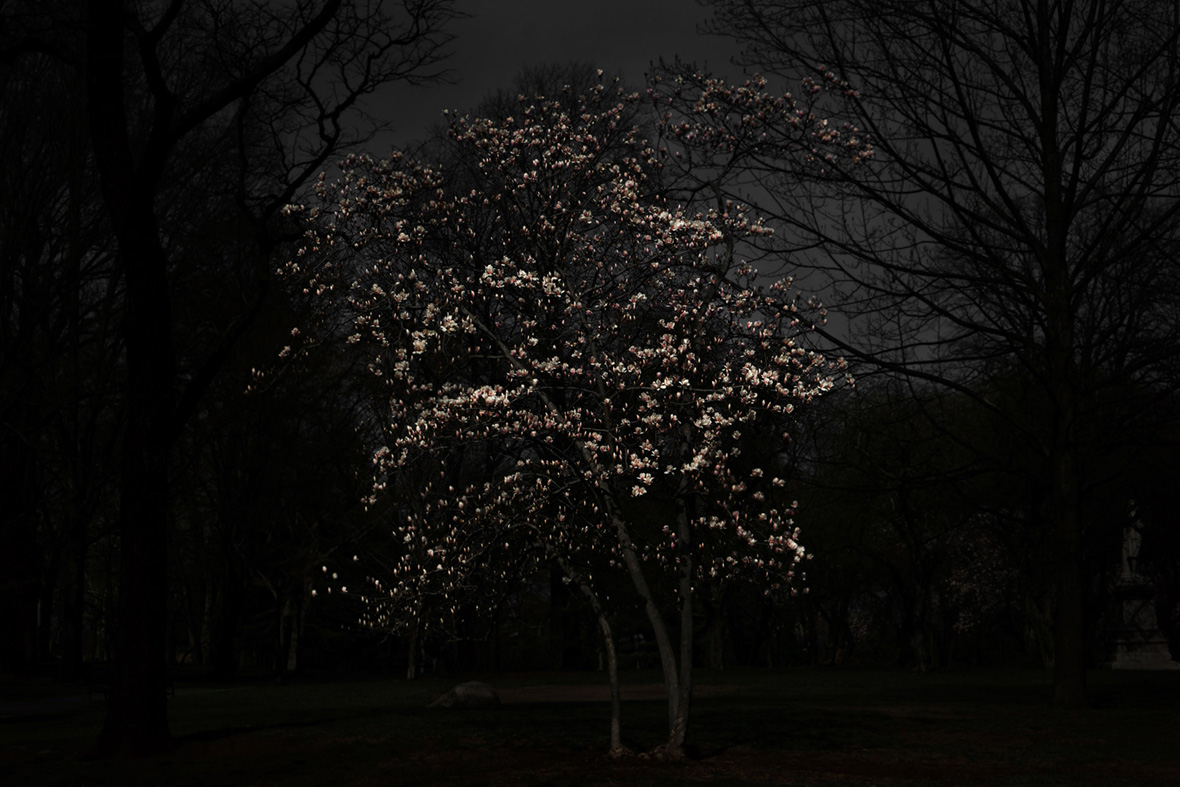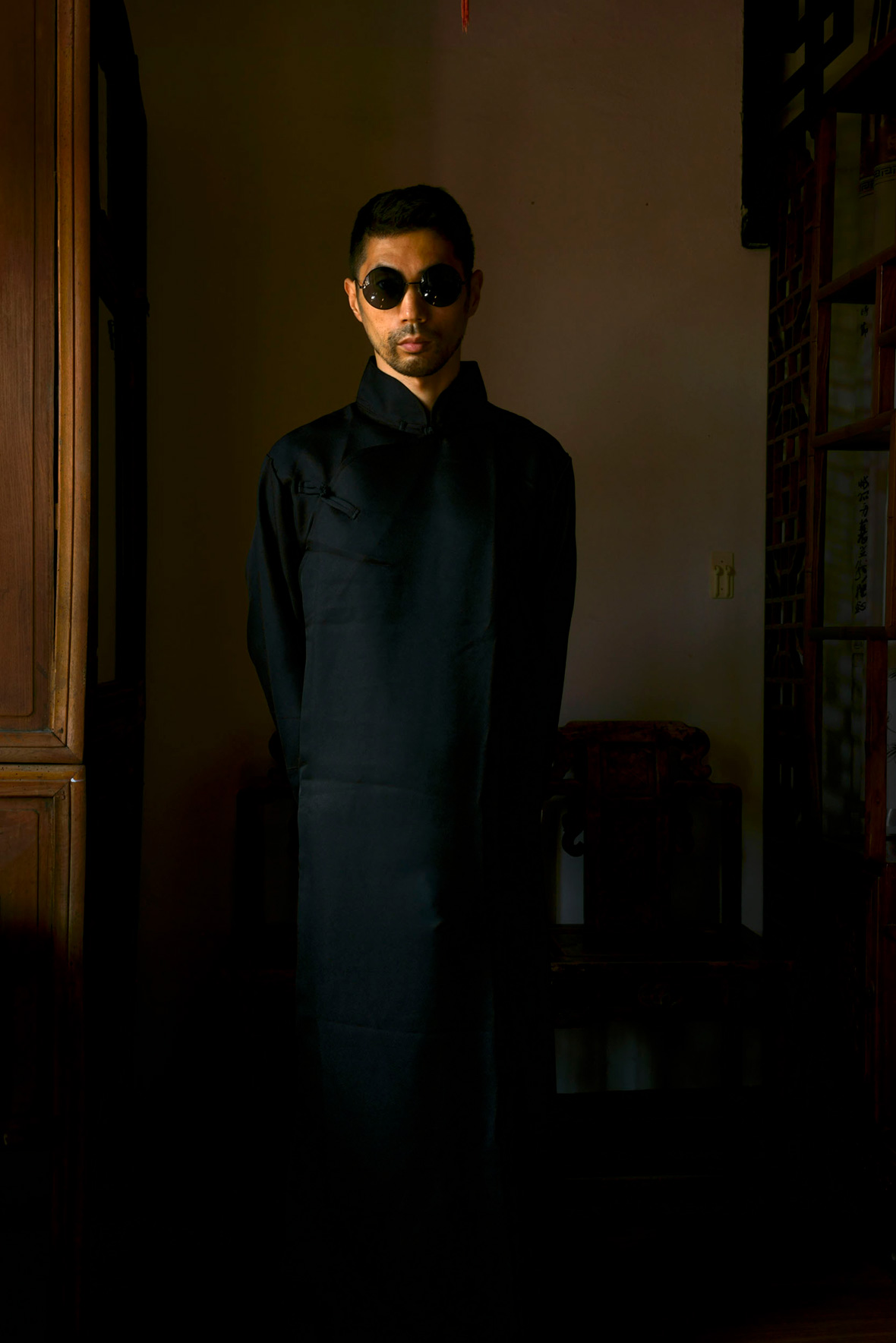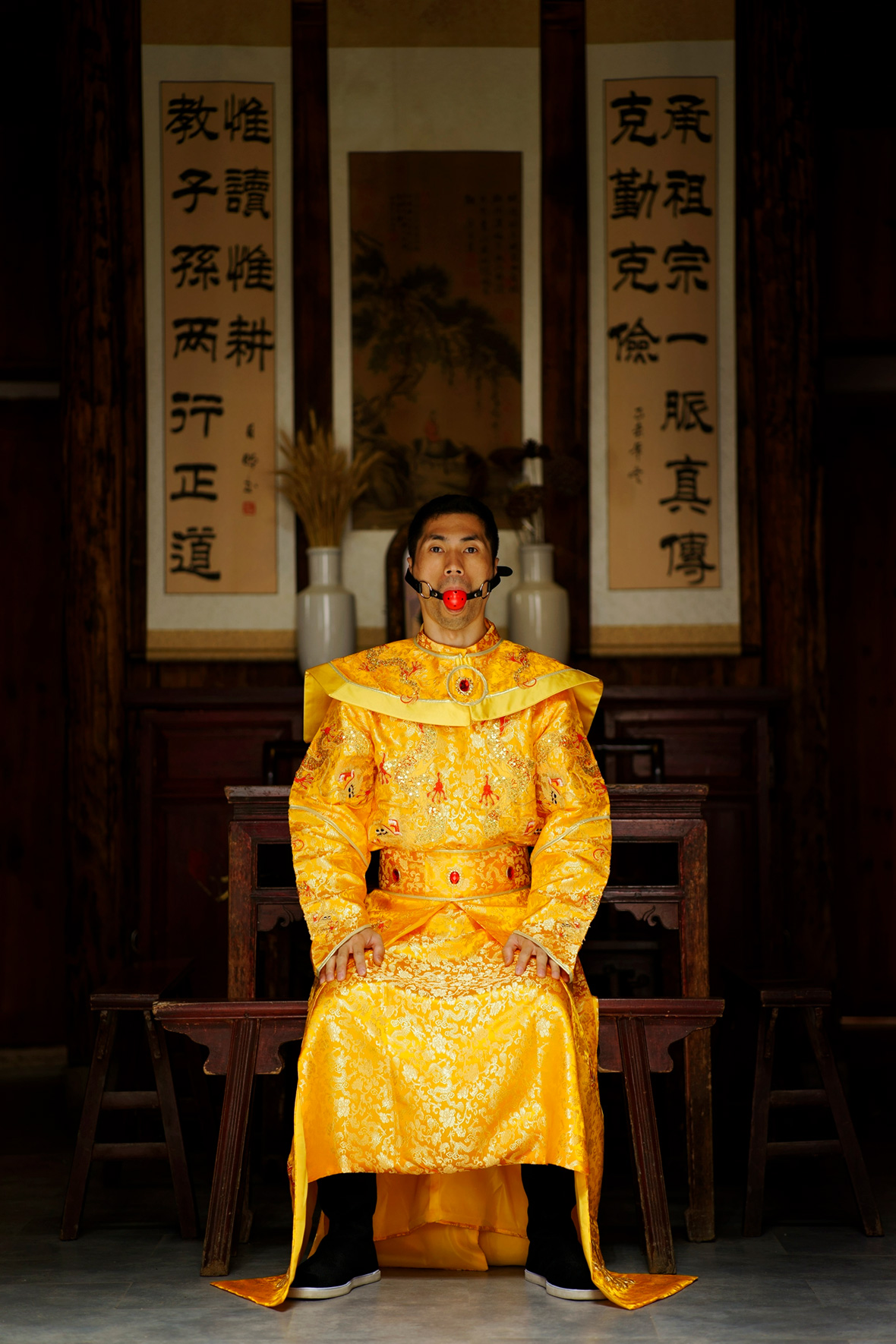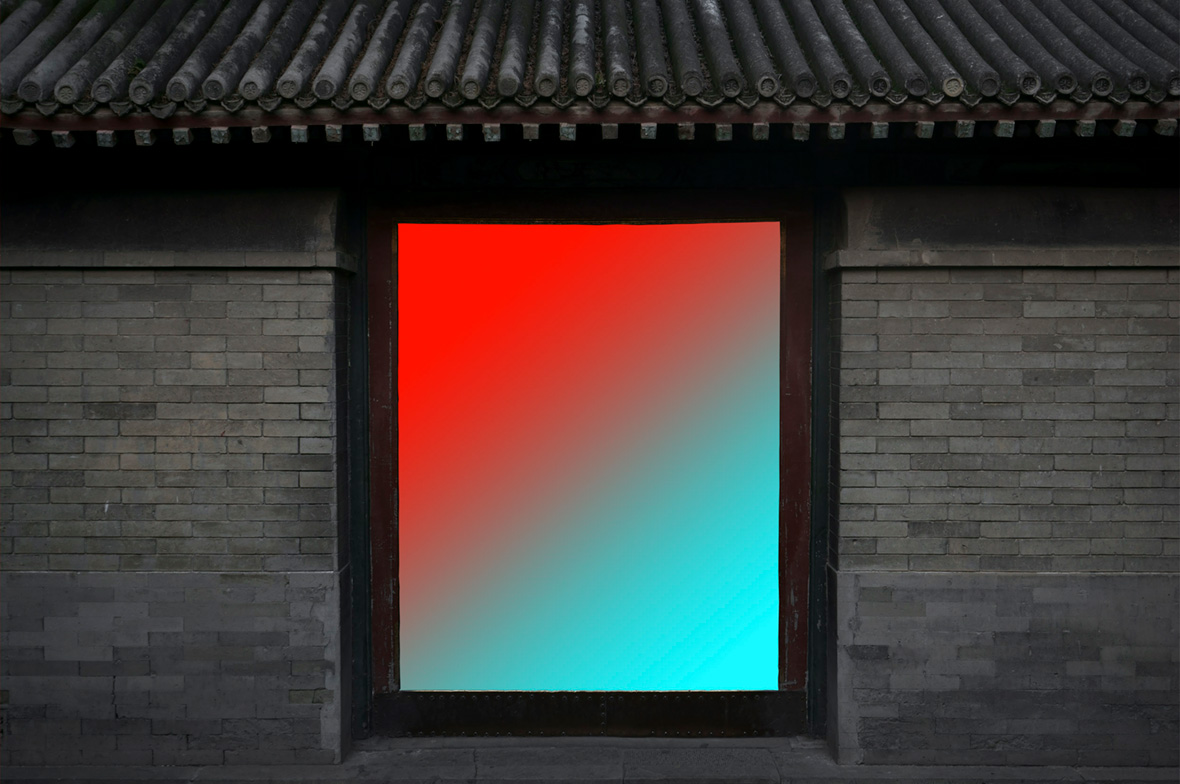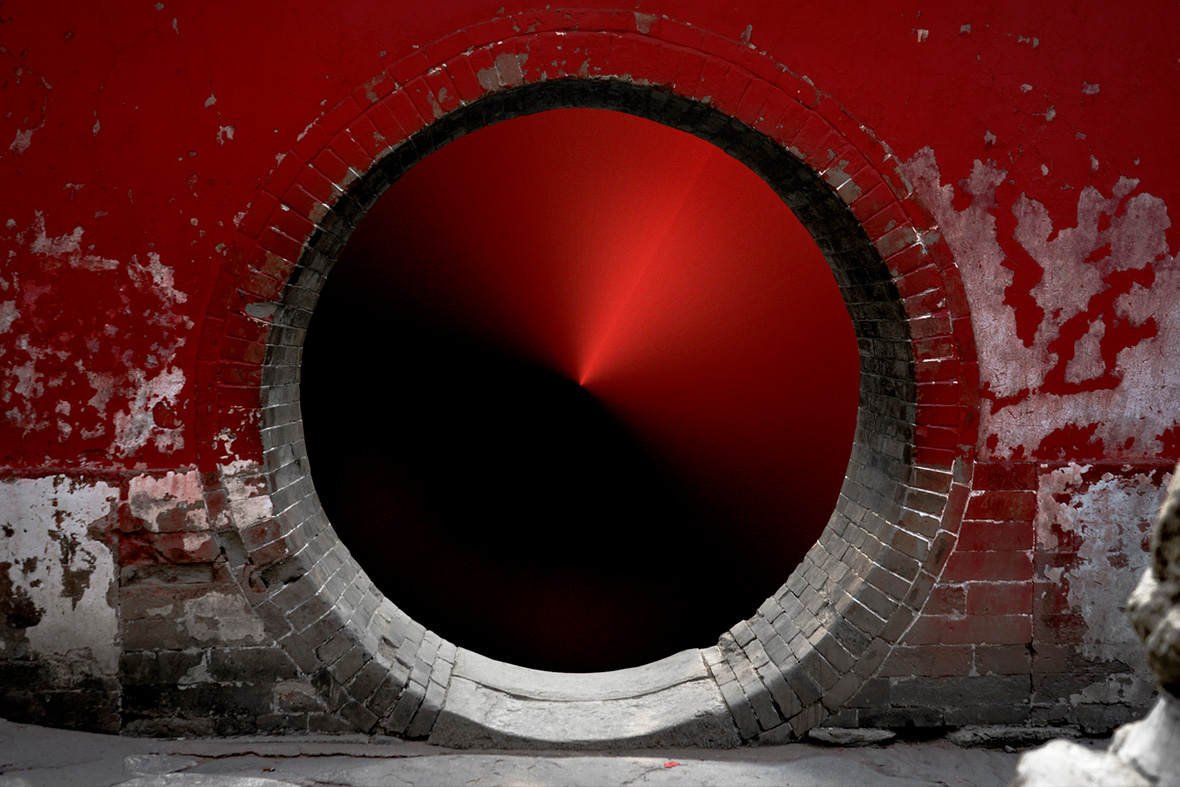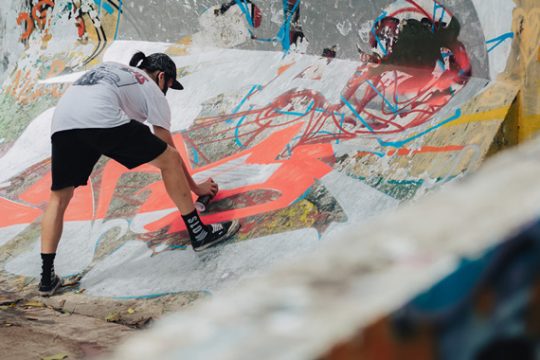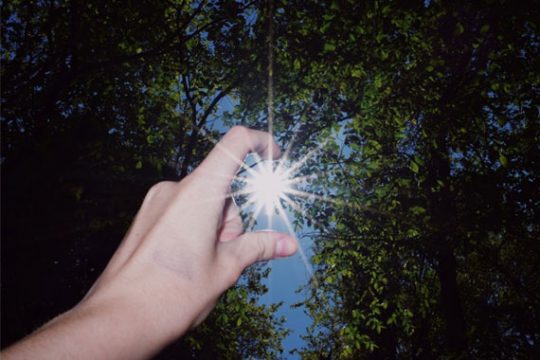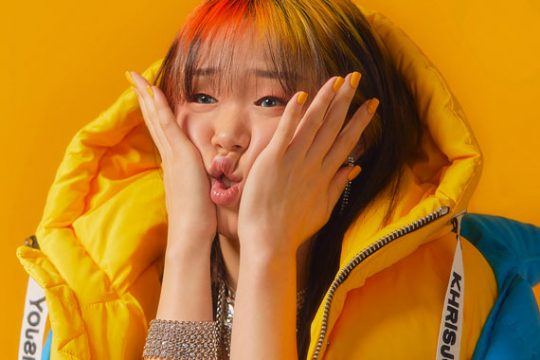
A woman dressed in white kneels on a sofa. She tilts her head slightly to the side with an alert expression on her face. Next to her, a half-dressed man sits on a table, staring directly at the viewer. This is a photograph from Almost Naked, a series of works photographer Shen Wei created upon arriving in Minnesota.
“I had just arrived in the States, I had culture shock,” he recalls. “I was not brave enough to explore myself, so I looked inwards through other people.” These intimate portraits are of everyday Americans in their homes and neighborhoods, in repose or suspended in a moment of daily routines. Some of the photographed subjects are fully dressed, some are fully exposed. Their gaze into the camera is firm and unambiguous. We are looking at them as they are looking at us. There is simultaneously a sense of candidness and vulnerability.
身着白色蕾丝边裙子的女子跪坐在沙发上,她头微微转向眼神的另一侧,露出稍稍警惕的神情。在她旁边,半裸男子佝偻在桌子的一边,双眼直勾勾地看着镜头。这是摄影师沈玮的《近乎赤裸》(Almost Naked)系列照片之一,是他到达明尼苏达州后所拍摄的作品。“美国和中国完全不同,带给我文化上很大冲击。那时候的我还没有足够勇气去探索自己,所以先把目光望向了身边的人”他回忆道。
沈玮往往希望通过作品来呈现普通美国人的日常,场景发生在房间或是街上。照片中,人物肖像好像没有任何距离感,令人倍感亲切。他们中有人穿着整齐,有人则全身赤裸,坚定不移地向镜头坦述心声。观众好像能与照片中的角色用眼神交流。但同时,一阵阵率真、脆弱的气氛从相片中缓缓升起。
Bodies are sites of power and introspection in Shen’s work. As one of the primary mediums through which he explores human sentiments, representations of the body are a dominant theme in his oeuvre. After acclimating to life in the States, Shen gradually turned his lens on himself both as the perceived other and as the agent of his identity. He placed himself in caves, the Ganges, homes, untamed nature, and manicured gardens. Attempting to dive into who he is across locales of spirituality, domesticity, the urban and the rural, he treats his own body as the vessel of expressions of the most fundamental human emotions: fear, nostalgia, disorientation, uncertainty, and so on. Over a span of a decade, Shen gathered this collection of self-portraits, forming the series I Miss You Already.
在沈玮的作品里,力量与自省都寄托于人的体内。作为他探索人类情感的主要媒介之一,身体是他作品的中心。在适应了美国的生活之后,沈玮开始逐渐将镜头转向自己。以旁人的视角观察这个可以代表自己身份的角色。
沈玮让身体置身于洞穴、恒河、房屋、大自然和修剪整齐的花园等种种场景中。试图在精神层面、家庭生活、城市和农村等不同语境和环境下的自己。他将自己的身体当作表达人类基本情感的工具:恐惧、怀旧、迷失、未知等等。十年间,沈玮将这些“自拍”作品整理为《Miss You Already(已经想念你)》系列。
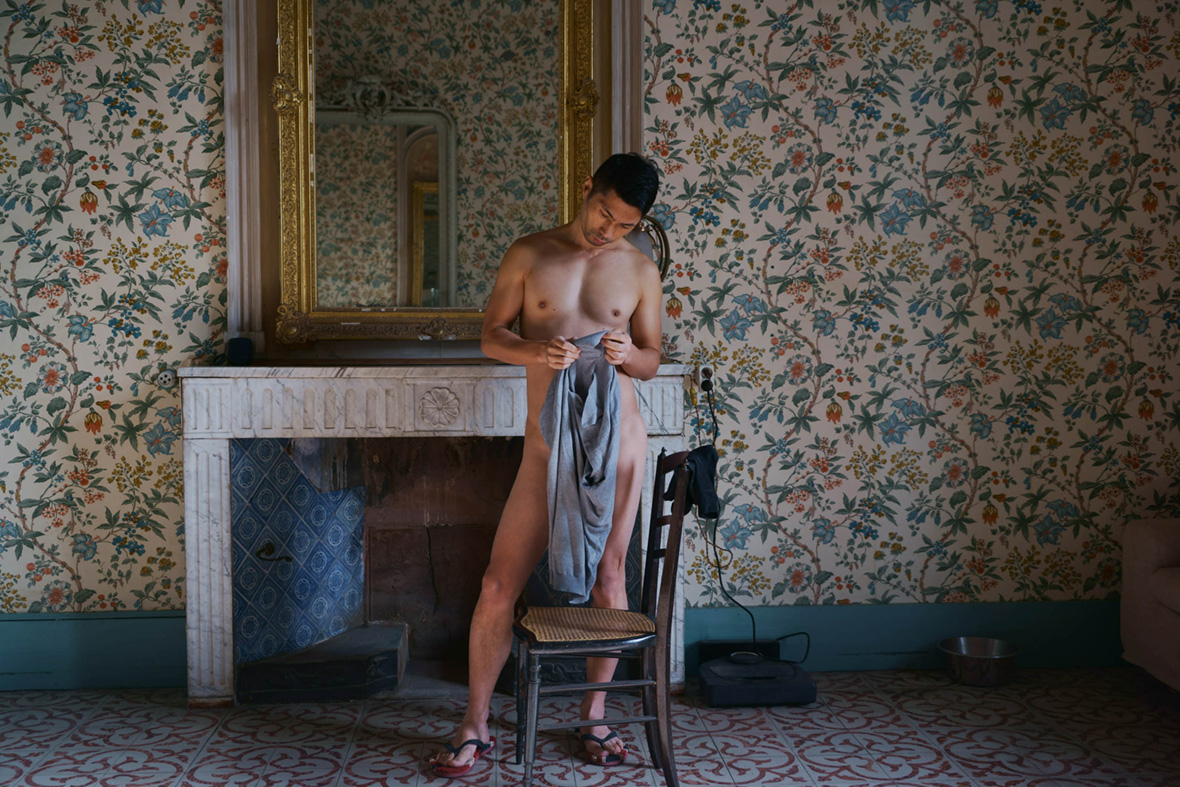
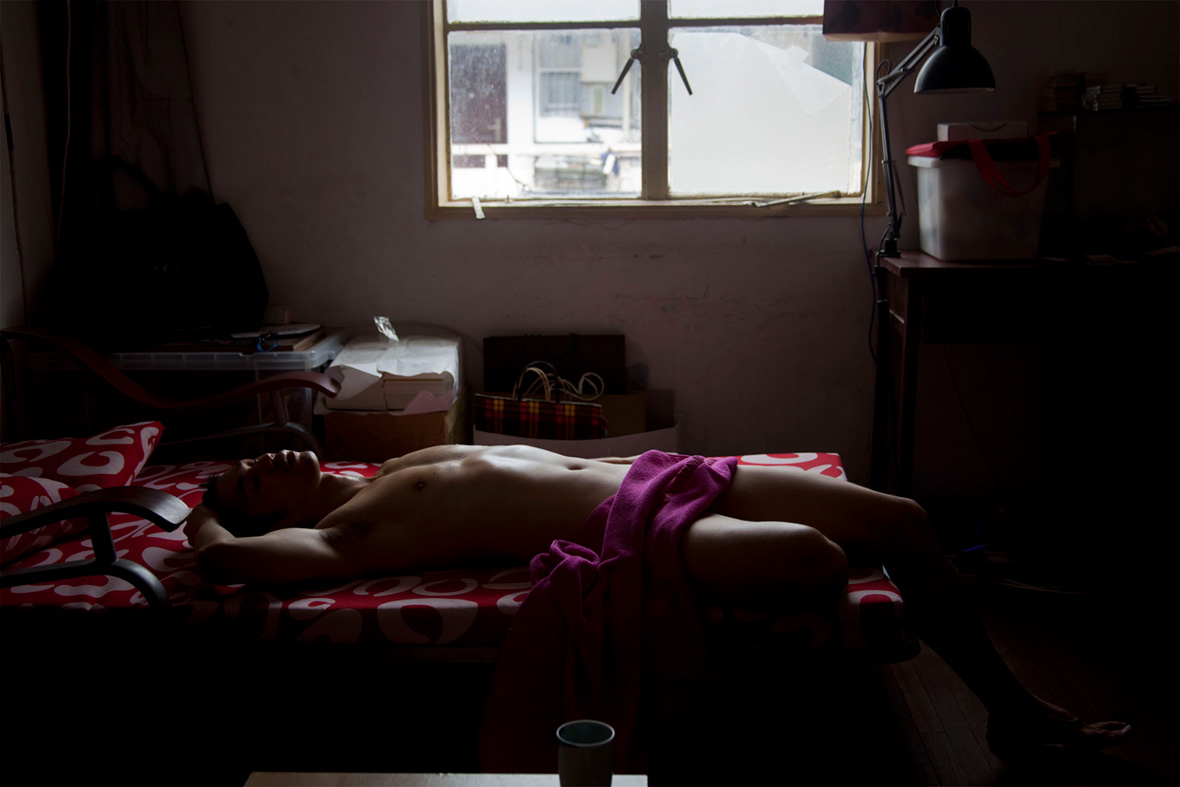
In one photograph, he can be seen lying on a bed covered by fuchsia-colored floral sheets in an old Shanghainese apartment. Shen grew up in one of the numerous old lilong neighborhoods in downtown Shanghai, where space was so scarce that the families of each building shared a communal kitchen and bathroom. The artist mentioned that the heat and staleness of the room he posed in reminded him of his childhood home.
照片上,沈玮赤裸全身地躺在老上海公寓里,床单上缝绣着紫红色花卉图案,描述着时代的痕迹。他打小在上海的弄堂里长大,在这个寸土寸金的城市,一栋楼里往往是家家户户共用一个公用厨房和浴室。沈玮说当时拍照这张照片的时候,房间里破旧的家具散出浓郁的闷热气,让他一下子想起小时候的家。
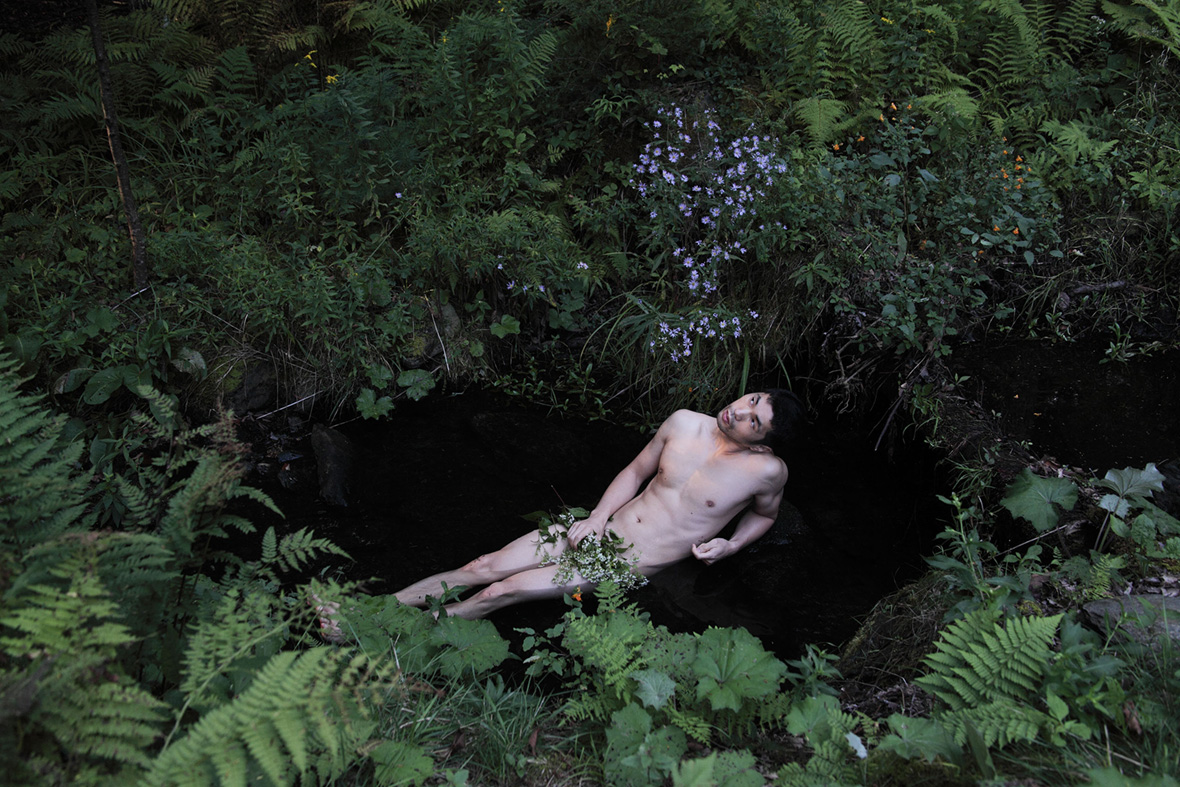
Also related to his childhood in Shanghai is the self-portrait titled Earthly, in which he revisits his longing for nature. Growing up in the narrow lanes of Shanghai, nature seemed far out of reach. Taking inspiration from Henri Rousseau’s The Dream (1910), Shen found a pond surrounded by blossoms and lush green to bathe himself in. “I stayed in the water for a good while,” he says. “There were lots of insects around and the temperature was a bit low. I didn’t start shooting until I felt I was one with nature.”
另一幅与他在上海童年息息相关的作品是自拍肖像《Earthly》,该作品诠释了他一直以来对大自然的向往。对于上海狭窄的同堂而言,大自然总是遥不可及。他以亨利·卢梭(Henri Rousseau)的《梦境》(The Dream)(1910)为灵感,找到一块池塘,这里四周环绕花朵和植被。“那次我在水中呆了很久。周围虫子很多,也蛮冷的。直到我觉得自己与大自然融为一体,才肯开始拍摄。” 他说道。
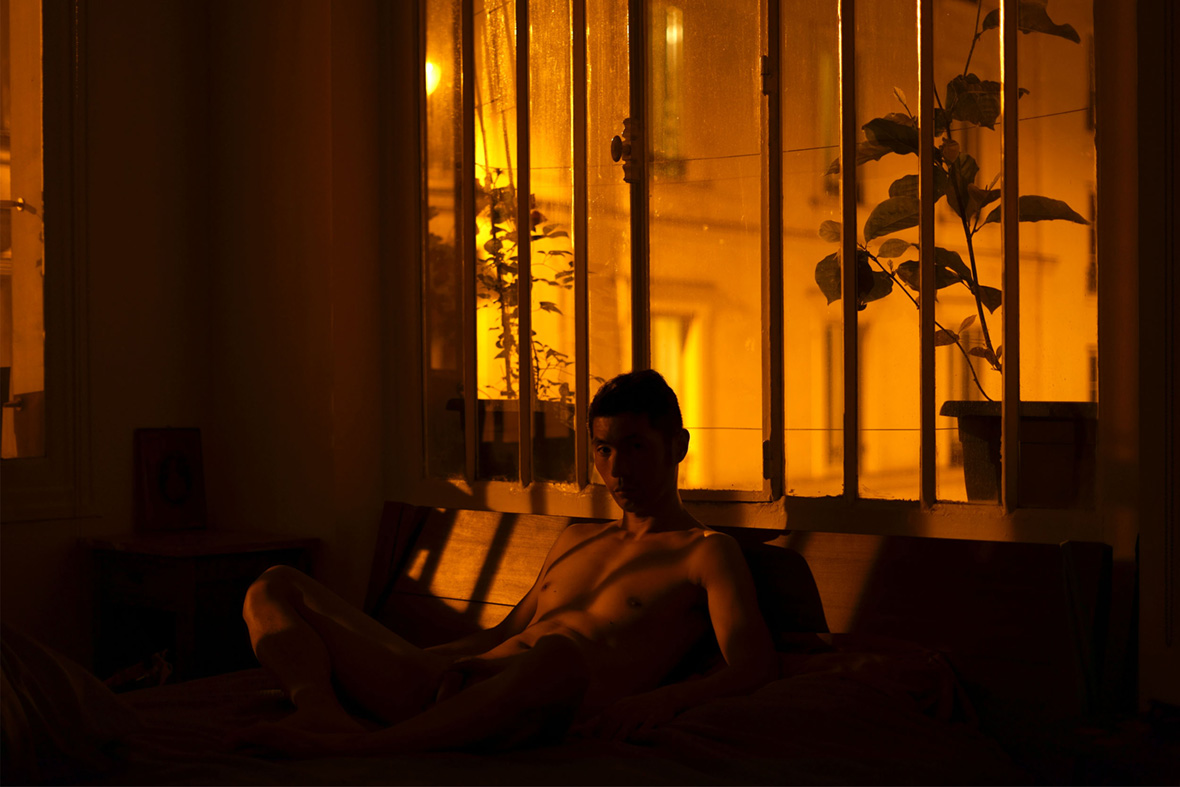
Using himself as the subject of his works, Shen Wei gestures towards introspection and self-discovery. As the artist puts it, “making these self-portraits is an experience of emotional release, a way to express my desire for openness and possibility, as well as a step towards learning acceptance”. These images are his instrument for self-reflection. By shedding away all the protective layers, Shen’s naked body is that of a newborn, an act of vulnerability and rebellion.
Gradually, his exploration of the self went beyond the physical world of palpable reality into his subconsciousness. Intrigued by the mysterious and the inexplicable in his dreams, Shen started to search for the mythical from scenarios of the quotidian. The resulting photographs are what make up the series Between Blossoms, a documentation of the fantastical inscrutability in his voyage across diverse geographies and imaginary landscapes.
随后,沈玮以自己为创作对象进一步探索。正如他所说:“将镜头对准自己是一种情感上的释放。能够满足我坦白的声音,也是接纳与学习的过程。”这些照片是他通往内心的有力道具。当外在的躯壳被层层扒去,真正的自我变得清晰透明,以此寓意新生,既脆弱又叛逆。
此后,他对自我的探索逐渐超越可触摸的现实世界,延伸到潜意识领域。那些神秘与奇妙的梦境令他着迷,于是,沈玮开始从日常生活的场景中寻找如梦似幻的画面,并拍摄了《盛开之间》(Between Blossoms)系列作品,用镜头记录着他徘徊于现实世界与虚构境地里,那些难以捉摸的奇妙时刻。

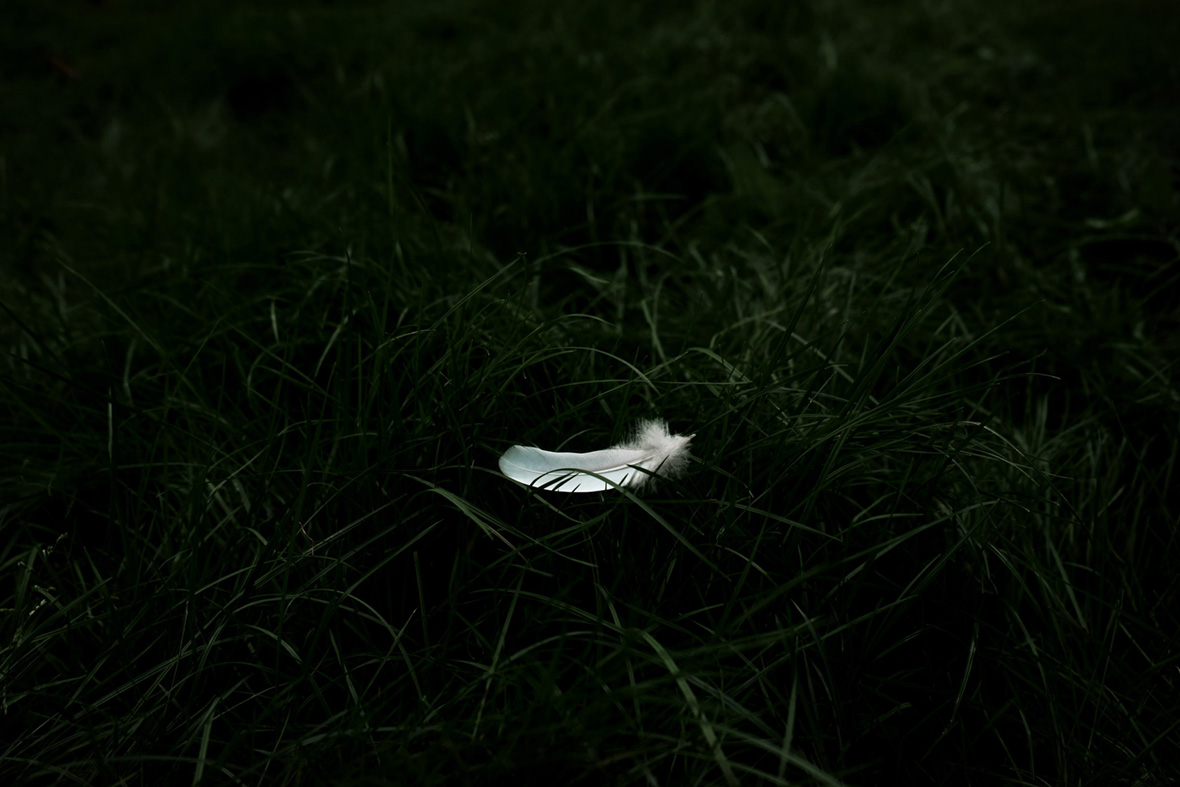
Caught between reality and reverie, the images in Between Blossoms often resemble a fictional backdrop against which a story is set to unfold. A Glass of Water is one such example. Surrounded by neatly organized books, the reflection of a red plastic cup takes center stage. The filled cup and its reflection in the mirror suggest a human presence preceding this moment. Light shot through the carmine plastic, its translucence, intensified by the smoothness of the mirror, lends the scene a certain surreal-ness. In Table for Two, a glance from a window unexpectedly turned voyeuristic as the camera focuses on a table set for two. In the foreground, green window frames are juxtaposed with the pink table napkins shaped into an origami of cauldrons. Behind the table, the background is an expanse of impenetrable darkness. It’s simultaneously an image of suspense and that of atmospheric forlornness.
《盛开之间》系列作品便是介于现实与幻想之间,当现实的事物被梦幻着色,为观众缓缓引述故事的开端。在其中一幅名为《A Glass of Water(杯中水)》的作品中,规整的老式书架旁边,梳妆镜中的深红色塑料杯子成为焦点。装满水的杯子和镜中的映像暗示着此处之前曾有人来过。穿透胭脂红塑料的光线,在平滑的镜子映衬下,显得更晶莹剔透,令整个场景多了一层超现实感。在另一幅作品《Table for Two(双人桌)》中,昏暗的灯光下窗内淡蓝色的双人桌格外引人注目;虽看似随意地一瞥,却意外地让人有种偷窥的错觉。前景的绿色窗框与考究的粉红色餐巾相互映衬,桌子后面的背景则是无尽的黑暗。整张照片令人浮想连连,同时一股愁绪孕育而生。
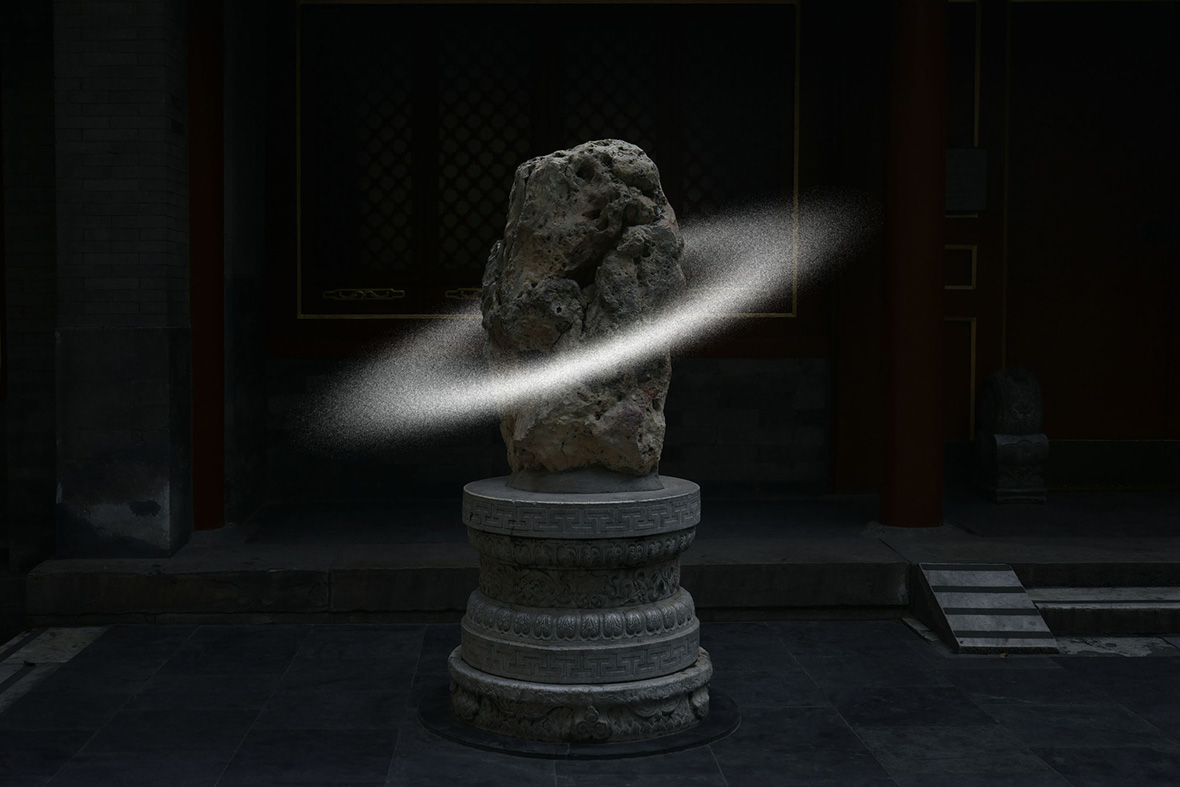
The artist’s search for the mythical evolved over time into a more metaphysical dimension. Inspired by classical Chinese paintings where large swathes of emptiness are treated as solid space, Shen Wei started transforming the empty space in his photographs into containers of qi. Qi is considered a vital force that flows throughout any living entity. It is a form of energy that underpins the philosophy of Chinese medicine but also regarded as an essential element that can create certain ambiance in the living environment. For Shen, qi freely circulates in his images, functioning as intermissions in between vignettes of a narrative in his latest body of work, Broken Sleeves.
慢慢地,沈玮对神秘感的探索逐渐演变为形而上学的维度。受到中国古典绘画的影响,大量幻想的元素围绕在现实空间里。画面中,那些不可名状的光晕、或是叙事手段被他称之为 “气”。作为中国古代中医哲学的基础,“气” 被视为是在流动在生命体间的某种力量,也是在生命在空间内创造氛围的基本元素。沈玮让 “气” 在其照片中自由流动,在他的最新作品系列《Broken Sleeve(断袖)》中,不同叙事的片段被这股“气”串连起来。

Broken Sleeves borrows from the story of an ancient Chinese emperor whose lover fell asleep on his sleeve. To not wake the lover from his dreams, the emperor cut off his sleeves. Shen dressed himself in a manner of historical characters in costume dramas. Wearing an imperial dragon robe, he plays the role of the emperor, but a ball gag in his mouth rendering the character out of place. In another image, he becomes the lover, reclining on a bed with elaborate wood carvings and embroidered blush curtains. In yet another, he time travels to assume the personality of a triad boss from China’s Republican era, dressed in a long mandarin robe and a scholar fan, also with the same gag as that of the emperor. Threading these personas together is the trajectory of qi as if pinpointing the landmarks of the protagonist’s journey across time and space. It assumes the form of a glowing red cube of light that impregnated the pavilion—its throbbing heart in the midst of flourishing vegetation whose verdancy is reduced to monochrome (Pavilion). It goes on to be the ruby-colored light traveling behind an arched door on an old street with chipped teal paint (Doorway (Glow)).
《断袖》借鉴自中国西汉王朝,汉哀帝与御史董恭之子董贤的故事:某日,汉哀帝的情人董贤枕靠在他的衣袖上入睡,为了不让他从梦中醒来,汉哀帝割断了衣袖。这段讲述男男之恋的故事后来被用来描述男性之间的相互爱慕的情节。
照片中,沈玮穿上戏曲龙袍,饰演帝王角色,情趣口球被塞进嘴里;另一张照片里,他又变成故事中帝王的情人,床边布满精美木雕和刺绣帘子;随后,他又摇身一变,穿越到民国时期,身穿长袍,手握纸扇。将这些不同角色串连起来的,便是“气”的轨迹,仿佛在标注角色穿越时空的旅程。该系列的其他作品中,“气”是亭子中发光的红色立方体,如同在繁茂树丛中跳动的心脏,周围的树木都被处理成单调的黑白色(《Pavilion(亭子)》);并随即化作一道红光,穿过老街和拱门(《Doorway (月洞门道)》)。
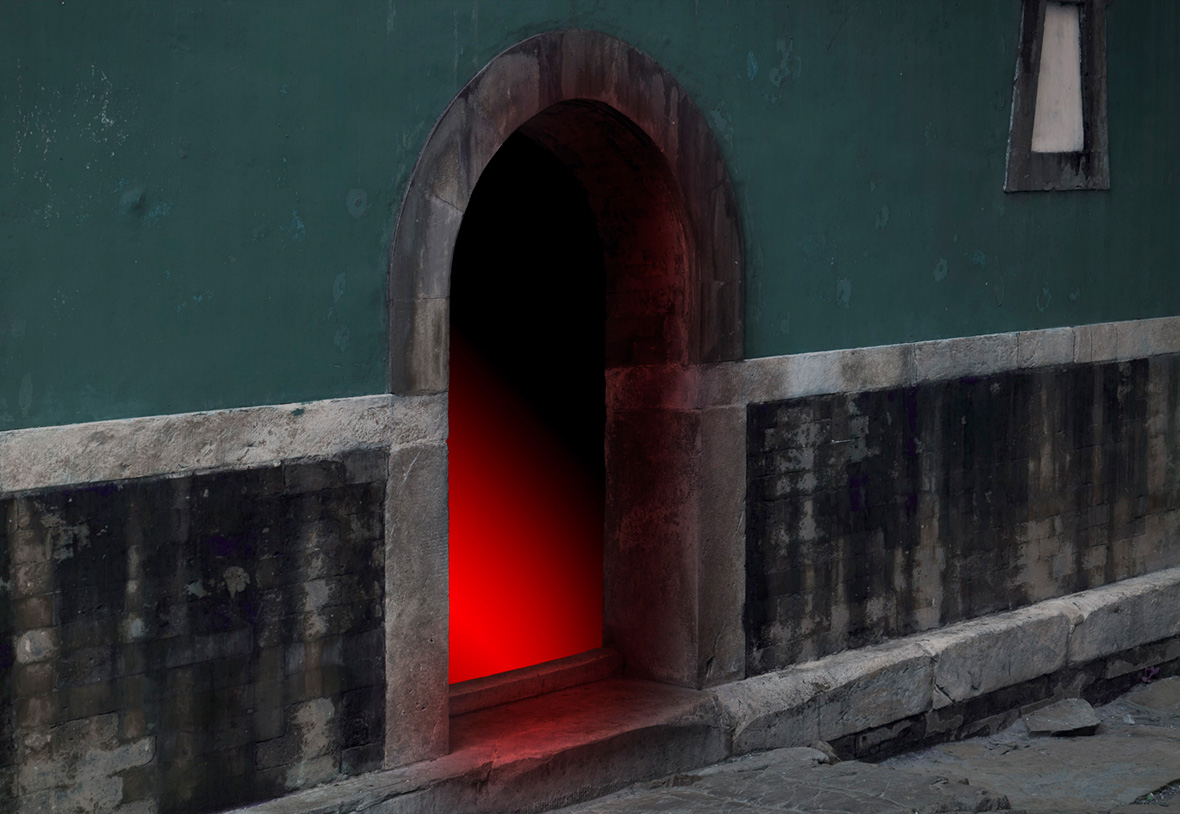
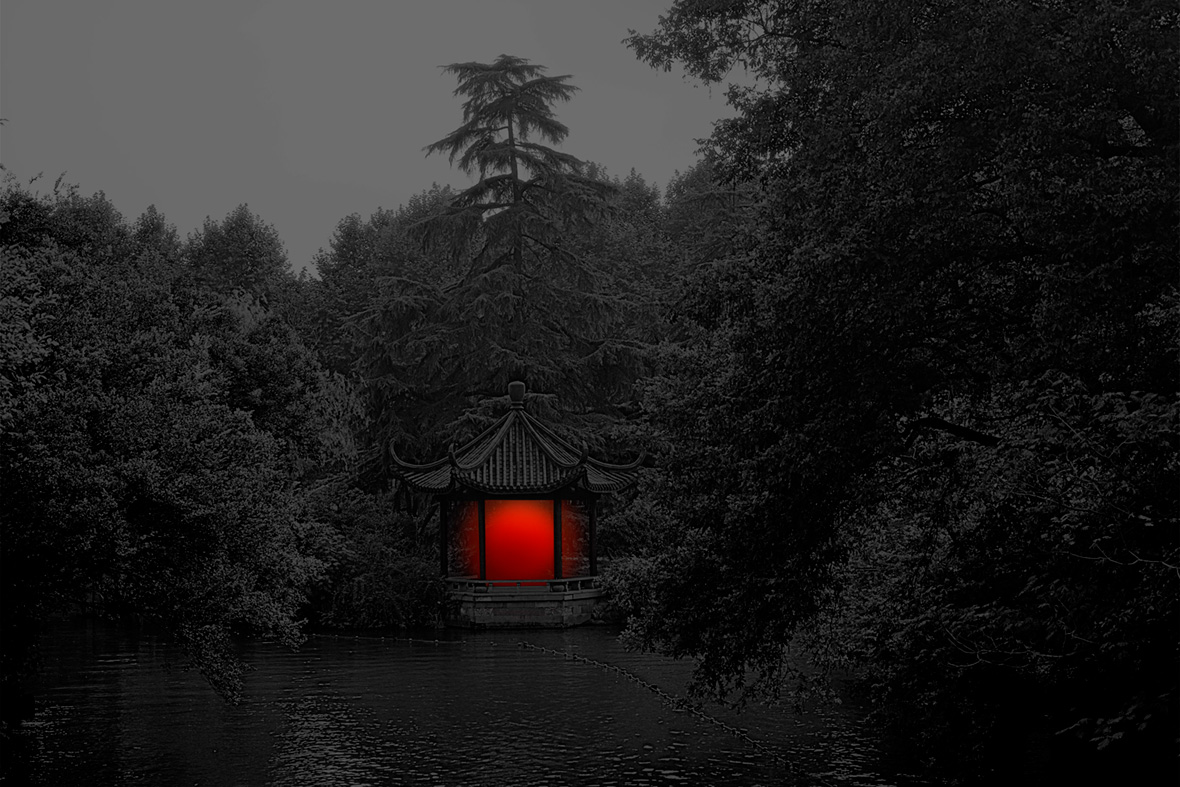
There is a distinct classicism in Shen Wei’s oeuvre. The compositions of his photographs call to mind those of Flemish still lifes, his preference for natural light instead of studio lighting results in a palette close to Old Master paintings. When an image’s center of attention rests on a human form, the contours of the body with all its built-up tensions reflect an influence from Hellenistic sculptures. It is intriguing to see how the artist gleans both from classical Chinese paintings and Greco-Roman traditions of forms in his image making. Shen Wei is unique in combining the two and imbues it with a diaristic style of storytelling. Going through his works is like reading a poem or flipping through someone’s old journal, a montage of his reconnaissance of the self situated in the imagined and the familiar.
不难发现,沈玮的作品的确伴有中国古典主义美学色彩,而其作品的构图又令人想起一些西方早期油画风格,例如佛兰德斯画派(Flemish)中的静物画。他偏爱自然光而绝非摄影棚照明,这让作品色调与经典油画逼近。在以人为主题的照片中,身体的轮廓及张力又带些许希腊雕塑的意味。他出人意料地同时从中国古典绘画与传统的希腊罗马艺术形式汲取灵感,这是他独树一帜之处,并赋予其作品日记体般的叙事方式,十分引人入胜。翻阅他的作品,就仿佛在读一首诗或某人的旧日记,是一套属于他自己的“蒙太奇”。
Like our stories? Follow us on Facebook and Instagram.
Website: www.shenwei.studio
Instagram: @shenweiartist
Contributor: Ashley Shen
Chinese Translation: Olivia Li
Images Courtesy of Shen Wei & Flowers Gallery


